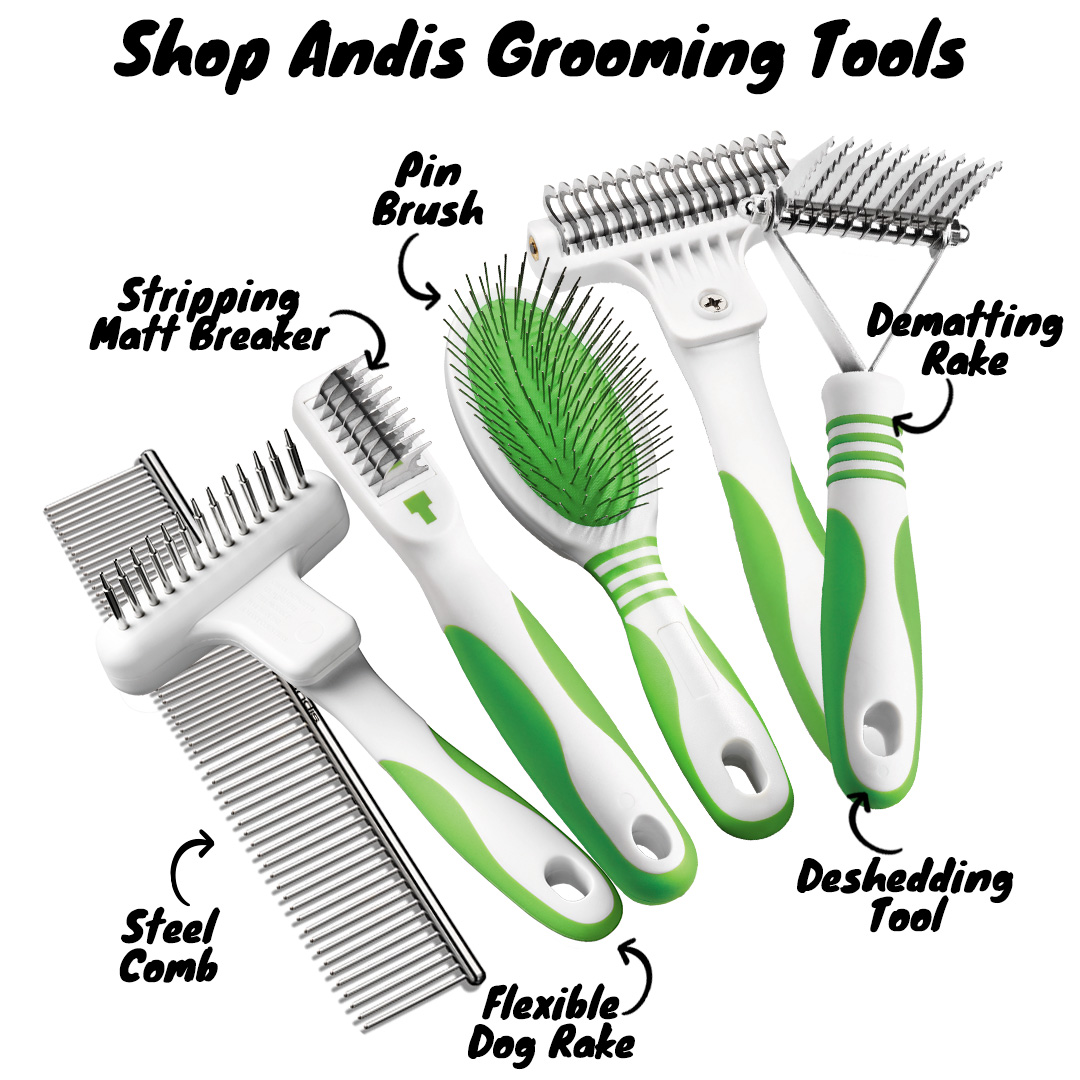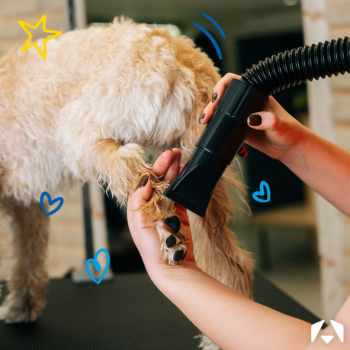
.png)
Dog external parasites
Spring brings warmer weather and for many pets this means more time spent outside in grassy, wooded areas where they’re vulnerable to fleas and ticks. Catching these parasitic pests early on is vital to the animal's health and taking the proper steps to removing these unwanted guests is key. Pet salon owners and dog groomers can best manage the problem by educating pet owners and the Pet Stylists that work for them.
Fleas on dogs
Fleas are small, about the size of a sesame seed and are sometimes difficult to spot. The best place to start is to look around the eyes and genitals of the pet because this is where the flea would go for water. Another sign of a flea problem would be little reddish flakes that break down when wet, this is called flea dirt. When a pet enters the salon with a flea infestation it should immediately be put in the bath.
Flea treatment for dogs
Bathing with a pesticide shampoo meant for animal use is essential to killing the fleas. There are many different shampoos on the market designed for this purpose and it is important to always read the label prior to using and follow the directions. The person bathing the animal should wear eye protection and gloves when handling pesticides, even natural ones, to prevent Acute Pesticide poisoning. Professionals may also want to go through the coat with a flea comb to remove the fleas before rinsing and drying. Checking and removing the fleas prior to drying will reduce the chances of live fleas being blown off the coat and onto other pets in the facility.
The pet owner should also be educated in eradicating the infestation from their home. The flea life cycle is anywhere from 12 days to 6 months depending on the environment and humidity. Washing the pet’s bedding and toys and fumigating by setting off “Bombs” every 12 days will help break the life cycle, and eventually eliminate the problem. Owners may also have to treat their yard if the pet spends significant time outdoors, as well as the vehicle the pet was transported to the salon in.
Ticks
Ticks come in varied species and carry multiple diseases such as lyme disease, anaplasmosis and rickettsiosis. Pets and humans should be checking themselves after hiking or walking in wooded areas and fields. Ticks are generally found on the pet’s head, ears, toes, and the folds between the legs, but can be located anywhere.
Educating the pet stylists and owners on locating and removing infected ticks as soon as possible will go a long way to preventing the transmission of disease. Dog groomers should use a tick remover or tweezers to pull the tick free without crushing or twisting. Make sure the head is removed to prevent a reaction or infection. Place the tick in a sealable bag and crush, this way the fluids will not touch skin as they can also carry infectious diseases. Do not attempt to smother the tick with alcohol or petroleum jelly and do not apply a hot match to the tick. These methods are outdated and can cause the tick to regurgitate saliva into the wound and increase the risk of disease.
The pet owner should be encouraged to purchase a flea and tick preventative for their pet. There are a wide variety of products available such as oral medications, where the owner would give a pill or treat type form, as well as many different topical forms.
Dog grooming salon
Many salons carry over-the-counter flea and tick medications for animals. With the pet owner's approval, a professional groomer can provide an oral medication to the pet upon arrival to help prevent an infestation in your salon. An alternative solution would be selling the owner an over-the-counter topical preventative that can be applied after the pet is groomed or even at home by the owner. Never apply an oral or topical preventative without first getting the owners approval and having them sign a liability release absolving you of liability, in the instance that the animal has a reaction. The pet may already be on a preventative and you do not want to double up on product as this could result in illness to the animal. If the pet needs further care, direct the owner to consult their vet for a prescription flea and tick medication.
The Grooming salon should be cleaned and sanitized daily but when you have had a flea or tick-infested pet come it is important to set off flea and tick “Bombs” to make sure anything that may have escaped from the infected pet is killed. This ensures that the other animals in your care cannot become infested. Because it takes extra product and time to eliminate fleas and ticks from pets, it is standard practice that most salons charge an extra fee for this type of removal service added to the pet grooming fee. Remind pet owners to take time after walking their pet, or whenever they’re re-entering a car or home, to scan for possible pests, especially during the spring and summer months. A little effort goes a long way for the pet’s health and the owner's peace of mind!

About the Author:
Diane Betelak, NCMG, has owned Heads and Tails Professional Dog Grooming, Inc. in Liverpool, NY since 1982. She groomed competitively in the U.S. and abroad and has numerous "Best in Shows" and "Best All-Around Groomer" wins and placings in prestigious competitions. Although now retired from competitive grooming, Diane remains active as a grooming educator for Andis Company where she teaches the finer points of grooming across North America. Diane has also been showing championship Standard Poodles in confirmation and obedience since 1987, winning multiple titles. She is now actively competing in agility with her current poodles.



.png)






